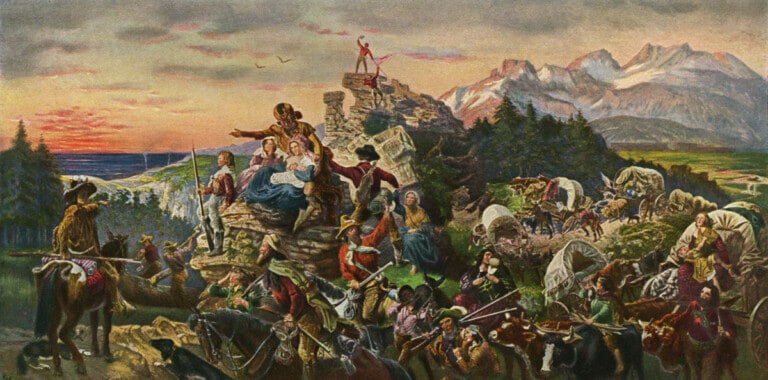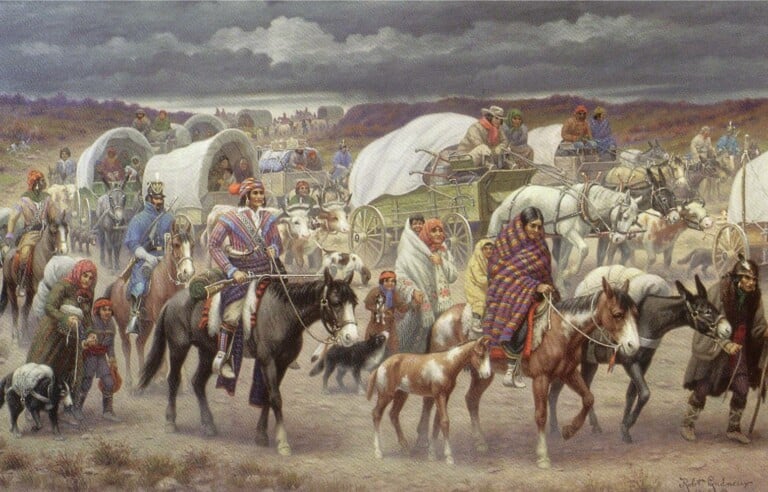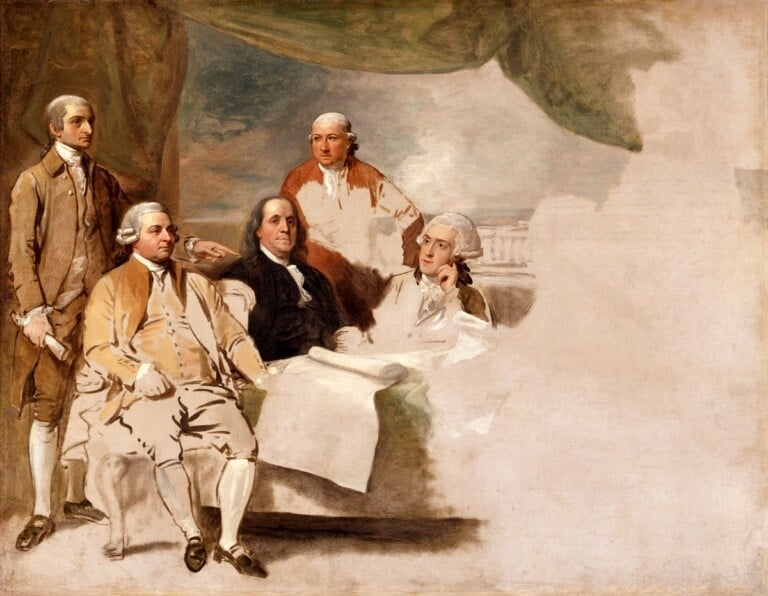A westward expansion
Expansion is both commercial and territorial. American expansion was always a sort of global attitude involving territorial growth and commercial expansion, exactly like a body that grows. America has always been perceived as a body.
The growth is so huge that nobody can do anything about it: unlimited development, though only extending to the West.
In 1800, the Western Boundary/Border was the Mississippi River. Beyond it, stood great areas of land, not very well known: 600 miles to the Rocky Mountains.
Louisiana was still a French territory (and France was then ruled by Napoleon). Napoleon sold Louisiana to the Americans for 15 million dollars to make war in Europe with Britain. As Louisiana was a huge territory, the American territories doubled over the night. Thanks, Napoleon!
Jefferson had sent explorers to the West to find an easy way to the Pacific. Louis and Clark left in 1804 and set off up the Missouri River. They marched for 10 weeks in the Rocky Mountains and ate their horses.
They finally reached the Columbia River, on which they floated down to the Pacific.
In December 1805, they reached the Pacific, after 4,000 miles. They failed to find an easy way but they showed the journey was possible and indirectly favoured expansion thanks to the useful information they brought back.
Oregon was a territory stretching from Alaska to California and to the Rocky Mountains to Louisiana.
In 1804, it was claimed by 4 countries: the US, Britain, Spain (owning California) and Russia (owning Alaska). The US and Britain had the strongest positions because they had sent people to scout to recognize the land and to settle trading posts.







